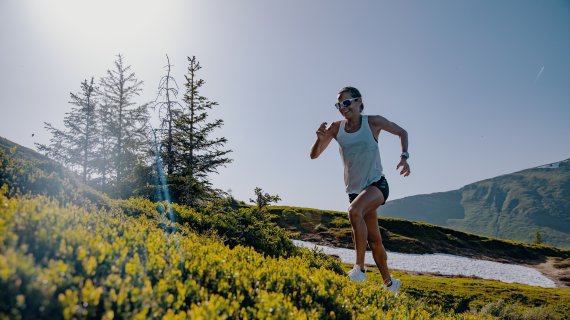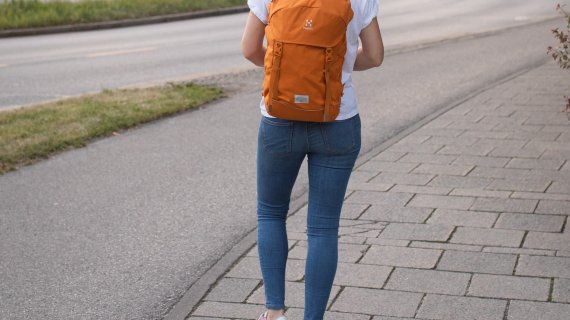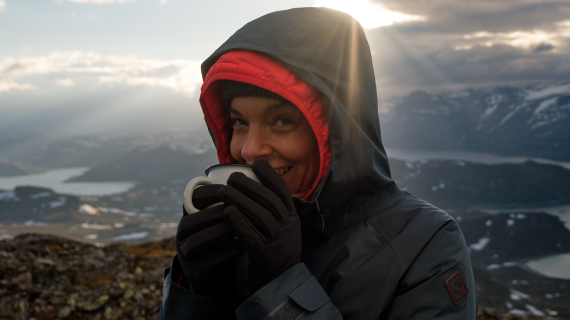Houses instead of canyons, sea instead of mountain lake. How do you get fit for alpine terrain in the big city? Our author tries to pack as many vertical meters as possible into his urban everyday office life. The perfect preparation for the ISPO Munich Night Run 2020 on 1 February.
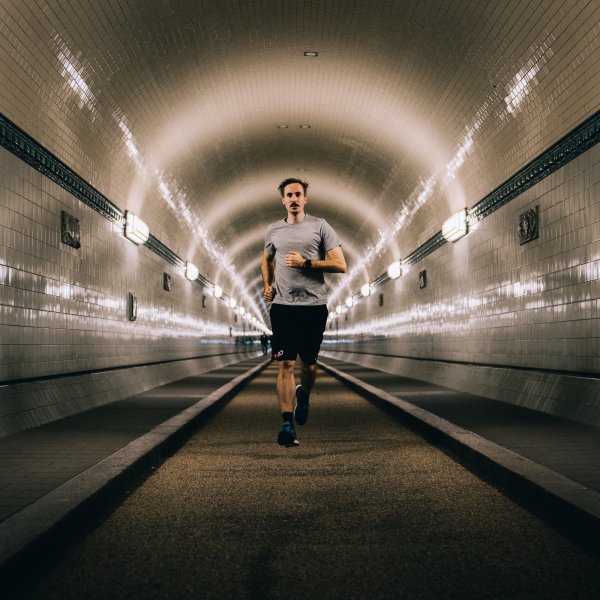
Urban Outdoor: How to get fit for the mountains between harbour and skyscrapers
I remembered the summit panorama differently. Instead of looking over green valleys, I look at the window fronts of glass office buildings. In the north, industrial chimneys puff small clouds into the hazy sky, and in the distance, not a deer but a sailing ocean liner roars. I stand on the Michel in Hamburg, the church tower and former landmark of the Hanseatic city in pre-Elbphilharmonie times. It's the highest peak I can climb here. And the only one.
I've set my sights on being ready for the next mountain tour in the Alps - without a gym, just with the possibilities of the city. And here, of all places. In the far north. In a working day that consists of sitting in the train and in front of the desk, where I spend most of the day at sea level. Maximum height: 18 metres above sea level. That's the coffee kitchen upstairs.
My lack of exercise and fitness in numbers: I cover between 1200 and 2000 steps on an average working day. My resting heart rate is 74 beats per minute. On weekends. During the week it's more like 79.
Fit through winter with the ISPO Munich Night Run 2020 on 1 February in Munich. Register now!
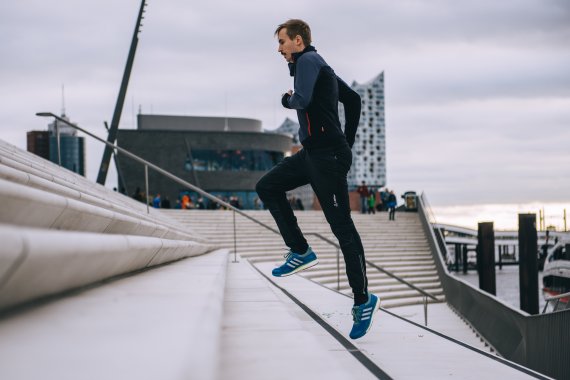
But the most shameful thing is the number of floors covered on foot per day: 5, in words: five. In meters of altitude: 15, because the value "flights", which is often recorded by fitness trackers and smartphones, can be roughly converted into meters of altitude by a factor of three. Clearly: This is better! To validly measure whether and how much more active I can be in my urban office life, I have equipped myself with a smart fitness watch, which I wear every day from now on. The choice fell on a model from Garmin, following the recommendations of friends whose "work-alpine balance" is much more balanced than mine. Precise altimeter and barometer, exact heart rate, GPS, 14 days battery life, sleep and fitness tracker for all kinds of sports, pulse oximeter ... On very sporty days I also put on a chest strap. We're good to go.
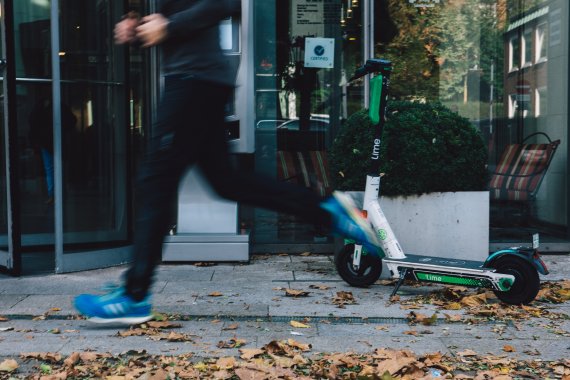
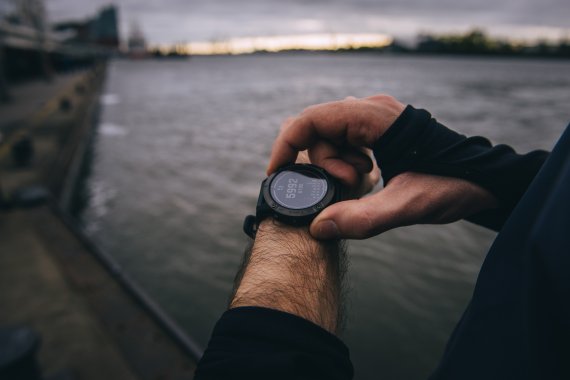
But we are still a long way from being completely sporty. For six weeks I want to carry out my good intentions. AFIMUR, I call it affectionately. "Alpine Fitness Program in the Maritime-Urban Area". The beginning consists mainly of apologies.
"Sorry, excuse me, can I go back again", I say to the morning grumpy faces of the commuters, as I admonish myself after the first two meters on the escalator to want to walk back every step, turn around - and run up the stairs. Several times I have to actively remind myself not to take the easy way. But why is it so difficult to get rid of these habits?
"Daily routines" are required, says the expert. I am not lazy, I would spontaneously run a half marathon. But over the years I got used to comfort, and integrating alpine training simulations into urban life is something different than a mere endurance run. Now I have to acquire new, more active routines, implement them consistently and adopt them in my everyday life. "People in big cities in particular simply don't move enough," explains Chris Ebenbichler. The 35-year-old is a sports scientist, has been teaching at the Institute of Sports Science at the University of Innsbruck for four years and is a specialist in athletic and fitness training for 15 top Austrian athletes at the Olympic Centre in Innsbruck. I asked him whether he could give me advice for my project and support me. When it comes to making people fit for the mountains, Chris is in! He also knows the biggest problem. "The body is very economical. Movements that we make only very rarely fall out of our movement pattern. An office job naturally promotes this development," he says.


And what's the solution? "You have to try to integrate many stimuli into your everyday life," explains Chris. Especially in the beginning it is not about intensity, but about frequency and abundance. He speaks of "natural movements". It is important to start slowly. Getting the body used to the movements. Climbing stairs, running, cycling - that is optimal. And that's what I'm doing. Much to the astonishment of the colleagues. Why I didn't just call, I'm being asked? Then I could have spared myself the two floors. "That's why," I laugh and tell them about my project. And this quickly becomes apparent in my everyday training statistics. The maximum of 2000 steps per day - the average office worker, by the way, ends up with 1500 steps per day - now turns into between 5000 and 6000, the optimal number being 10,000 daily steps according to medical studies. The number of floors covered is also rising. 20 per day on average in the first two weeks. 60 meters altitude. I'm sorry? The number sets me back. I run up every step that gets in my way. But 60 altitude meters - this is at best the way from the parking place to the gondola station, but it is not a mountain tour.
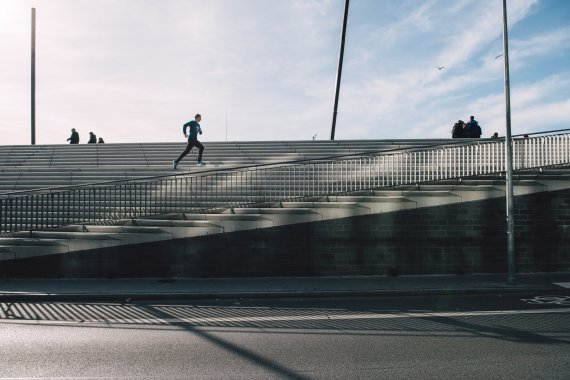

I am igniting stage two of my AFIMUR program. "Go for polarizing training," says Chris. "We need the full range of metabolism. This means, on the one hand, you make units with a high scope and low intensity. You stay in the aerobic zone at low heart rate. This makes the heart bigger and prepares your vessels for greater stress. In addition, there is then training with high intensity in the anaerobic range and at a higher heart rate." What is a "low" or a "high stress pulse" must be determined individually by each person. The best way is to have a sports medical check, explains Chris.
Every day I now get on my bike instead of taking the subway. I always try to stay within my basic area on the way to work every day. At the beginning I need 25 minutes for the track, but now it's almost 22 minutes. In other words, I have increased my average speed by about two kilometers per hour under the same load. For lunch, I don't stand on the e-scooter parked on the side of the road, but jog at a moderate pace and in a seemingly out of place business outfit next to my colleagues.
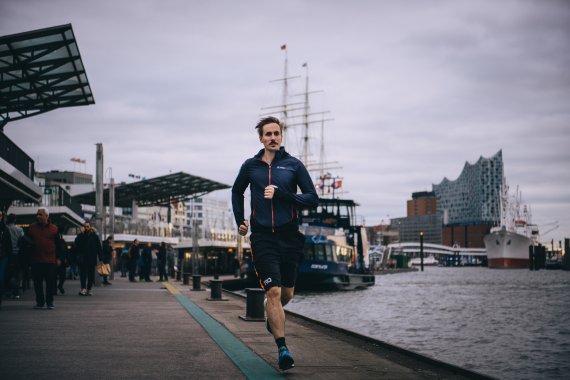
There is only one problem: The meters of altitude are not increasing. Sure, cycling makes the subway steps unnecessary. As compensation, every evening, to the amazement of the other residents, I ran up and down the staircase to my apartment on the fifth floor several times. Even after five intervals, I can still talk to the irritated neighbor with a reasonable degree of freedom. Nevertheless, the view on the statistics remains sobering: I have climbed 945 meters in altitude. In three weeks. That's just 100 meters more than a tour of one of Munich's local mountains, the Herzogstand, which you can walk up after work as a sporty bedtime treat. For comparison: In the "Dolomitenmann" mountain race of Red Bull, the participants cover 2000 meters in altitude. In an hour and a half.

In order to collect altitude meters, I forge a (training) plan. I exchange the symbolic summit cross for that of a church. The Michel in Hamburg is on my daily way to work, which I now walk in my running outfit. Shirt and jeans I usually wear in a backpack on my back. 452 steps, almost 130 metres in altitude - that sounds really alpine for Hamburg conditions. And so from now on, whenever time permits, I puff up on Hamburg's landmark in the early morning hours and on my way home in the evening, to at least enjoy the urban bliss of the summit. At the top, I look out over the city. Sunset. I look at my watch and the statistical manifestation of my new, more active everyday life. I nod content with myself: 89 floors (267 meters of altitude), 19,542 steps, peak pulse of 172, a resting pulse of 66 heartbeats. Not a bad day.

It is impossible to integrate a number of metres in altitude worthy of a mountain tour into everyday urban working life. But the last six weeks - and the tips from Chris - have shown me that it's not just the numbers that count. Instead, it is about dealing more consciously with movement, acquiring "daily routines" and making one's entire everyday life more active.
I am curious to see if my urban fitness program will prove its worth on the mountain. Finally I pack my suitcase: hiking boots, rucksack, water bottle, telescopic poles - everything there. At the weekend we will go to the south. The Alps. One last look at my training statistics reveals: I have covered 247 kilometres on foot in the past six weeks. 3000 meters of altitude difference overcome. But even more important: I have a really good feeling. I'll be reasonably fit. And on top of that comes the pure anticipation. Of canyons of rocks instead of houses.
